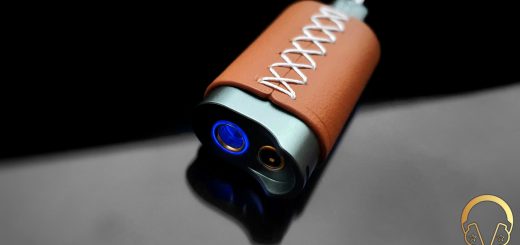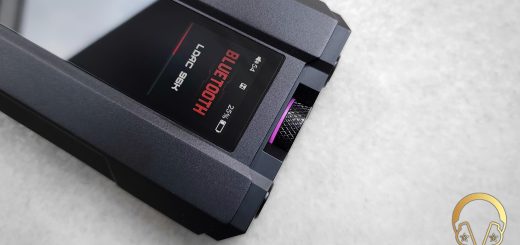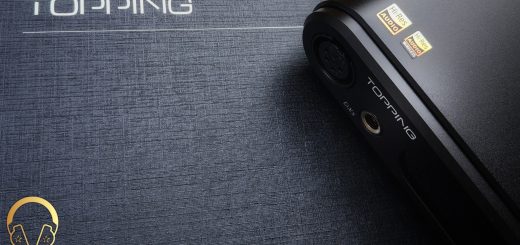Colorfly CDA-M2 Review

Colorfly CDA-M2 Review
Introduction:
Colorfly is an audio brand that specializes in developing and selling HiFi audio products, such as digital audio players, in-ear monitors, and DAC/amp dongles. The company was founded in 1995 and is based in Shenzhen, China. Colorfly is known for their highly popular Pocket HIFI C4, in 2010. Some of their other well known products are the U8, their flagship DAP, the CDA-M1, a versatile dongle with balanced and single-ended outputs, and the Quintet, a five-driver hybrid IEM.
Colorfly CDA-M2 is a new flagship USB DAC/AMP dongle that packs a premium audio architecture with dual flagship Cirrus Logic DAC chips. It is based on the design of Colorfly’s U series audio players, while the main components of the CDA-M2 are a USB receiver module, a Dual CS43198 DAC setup, XR2001 Op-Amp’s, an FPGA DSP processor, two Jitter Kill femtosecond clocks and a noise-suppression system integrated in to 6-layer gold-plated PCB that features a strategically isolating digital and analog circuits for optimal audio signal processing.
The CDA-M2 reorganizes data in ASYNC (asynchronous) mode, which allows it to avoid USB clock and SRC interference and produce clearer audio output. All this components are located inside a Zinc-Alloy Electroplated Chassis that has both a 3.5mm Single-Ended and 4.4mm Balanced output, while the 3.5mm output offers also SPDIF Coaxial Output support.

Disclaimer:
I would like to thank Shenzhen Audio and Colorfly for providing me the Colorfly CDA-M2 USB DAC/Amplifier Dongle for review purposes. I am not affiliated with Shenzhen Audio or Colorfly beyond this review and these words reflect my true and unaltered opinions about the product.
Price & Availability:
The Colorfly CDA-M2 is a well-equipped USB DAC/Amp dongle that punches above its weight. Packed with compelling hardware like dual flagship Cirrus Logic CS43198 DAC chips, XR2001 Operational Amplification chips, both 3.5mm SE + 4.4mm Balanced outputs, and a OLED Display Screen that offers an exceptional value at a competitive price of $159.00 USD.
More details can be found under the link below;
Package & Accessories:
The Colorfly CDA-M2 arrived in a compact, cube-shaped box with some bandings and an illustration of the device on the top.

Inside the box are the following items;
- 1 x Colorfly CDA-MP2
- 1 x USB Type-C to USB Type-C Cable
- 1 x Print Material

Design & Build Quality:
The Colorfly CDA-M2 is a portable USB DAC/Amplifier in form of a dongle that is equipped with a Dual Cirrus Logic CS43198 DAC Chip setup. The CDA-M2 has a chassis made of 5-axis CNC machined aluminum material that has a Zinc-Alloy Electroplated surface, which makes it pretty lightweight with just 27g. It adopts its predecessor the CDA-MP1’s coaxial ring design, features a dual sides shape a signature of the M series.
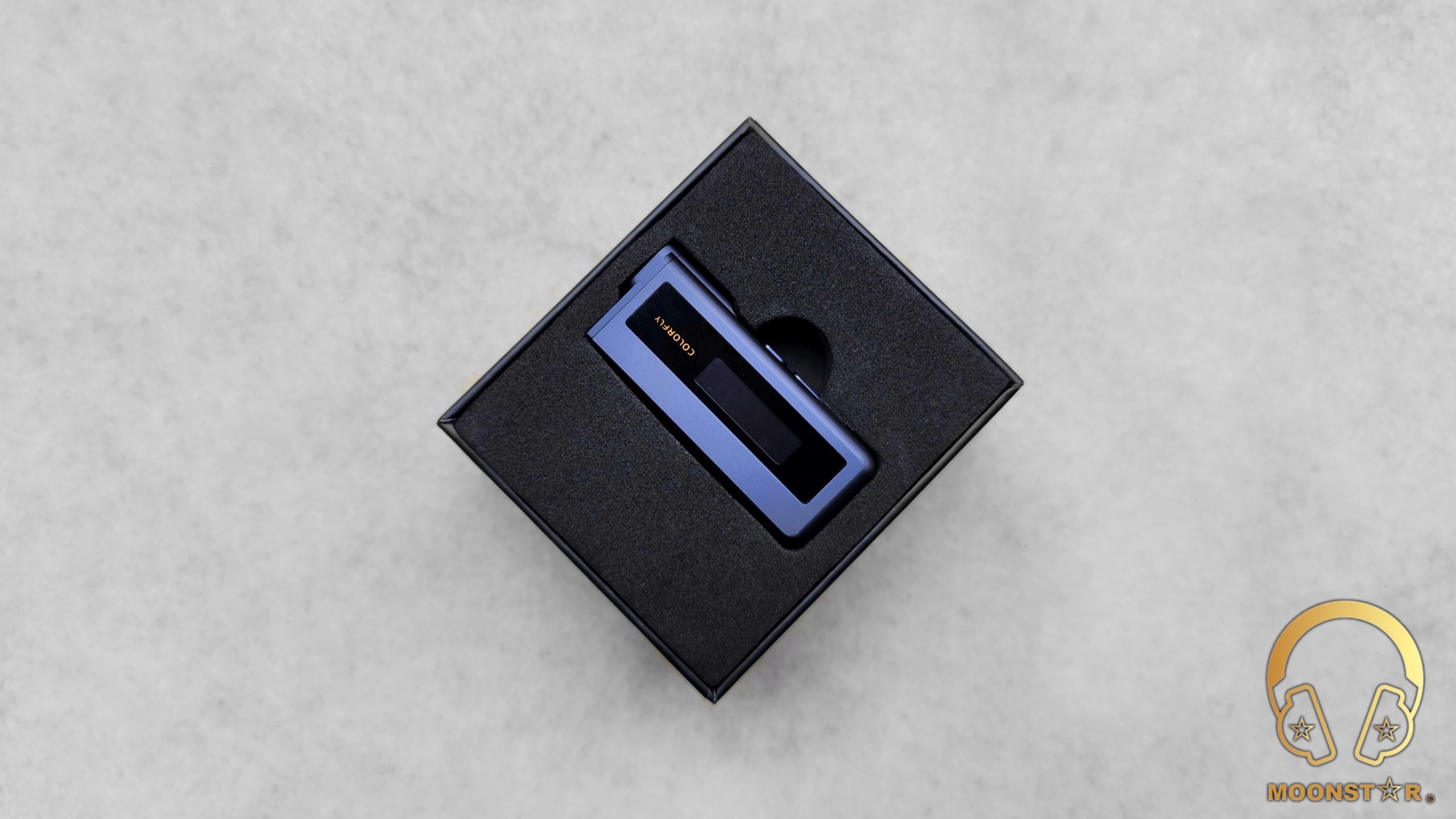
The device is also quite compact thanks to its relative small dimensions of about 58mm*25mm*13.5mm.

The CAD-M2 is available in two different color options that are grey like my review unit, and a limited edition in purple color, which is a collaboration with ddHiFi that comes with a special dual shielded power & data cable.
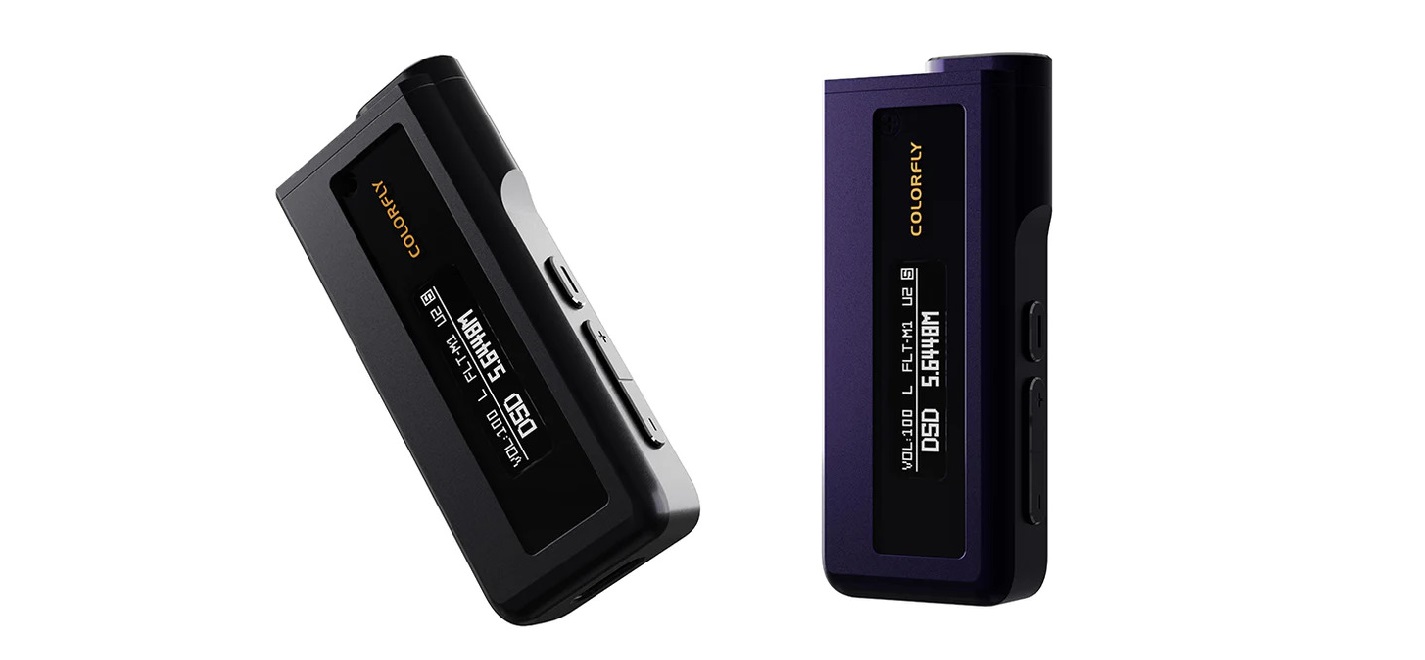
On the top of the devices is an OLED Display with a resolution of 128×64 pixels which gives you information like sampling rate, gain, volume, filter, USB mode and more.

Near the display is the Colorfly brand logo.
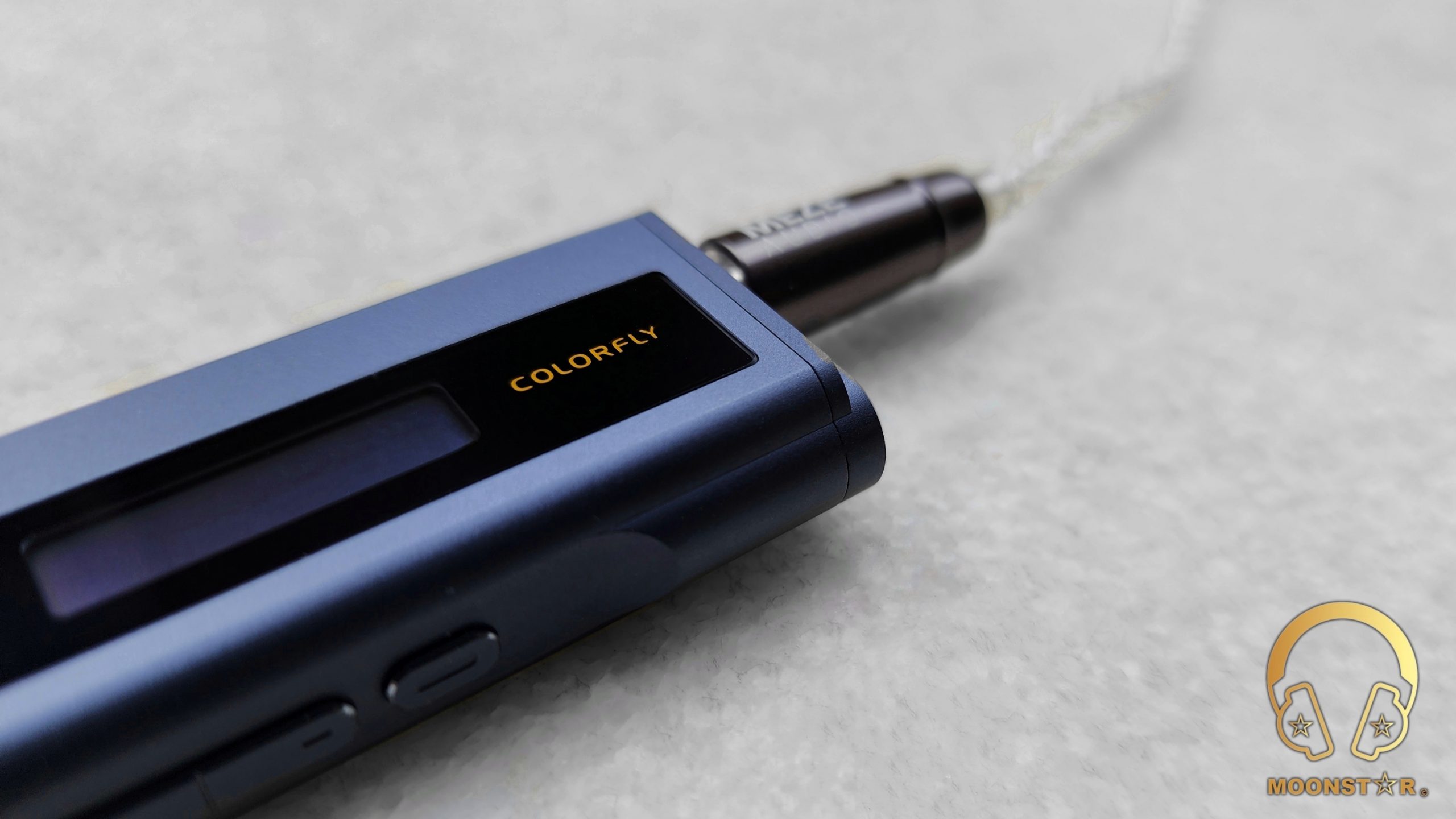
At the rear side of the device are some product related brandings.

The right surface of the CDA-M2 features volume rocker and menu button that gives you access to multiple settings like Gain, DAC Filter, Power, Left/Right channel adjustment, Screen Brightness, Auto Screen On/Off duration, Screen rotation, USB mode and more.
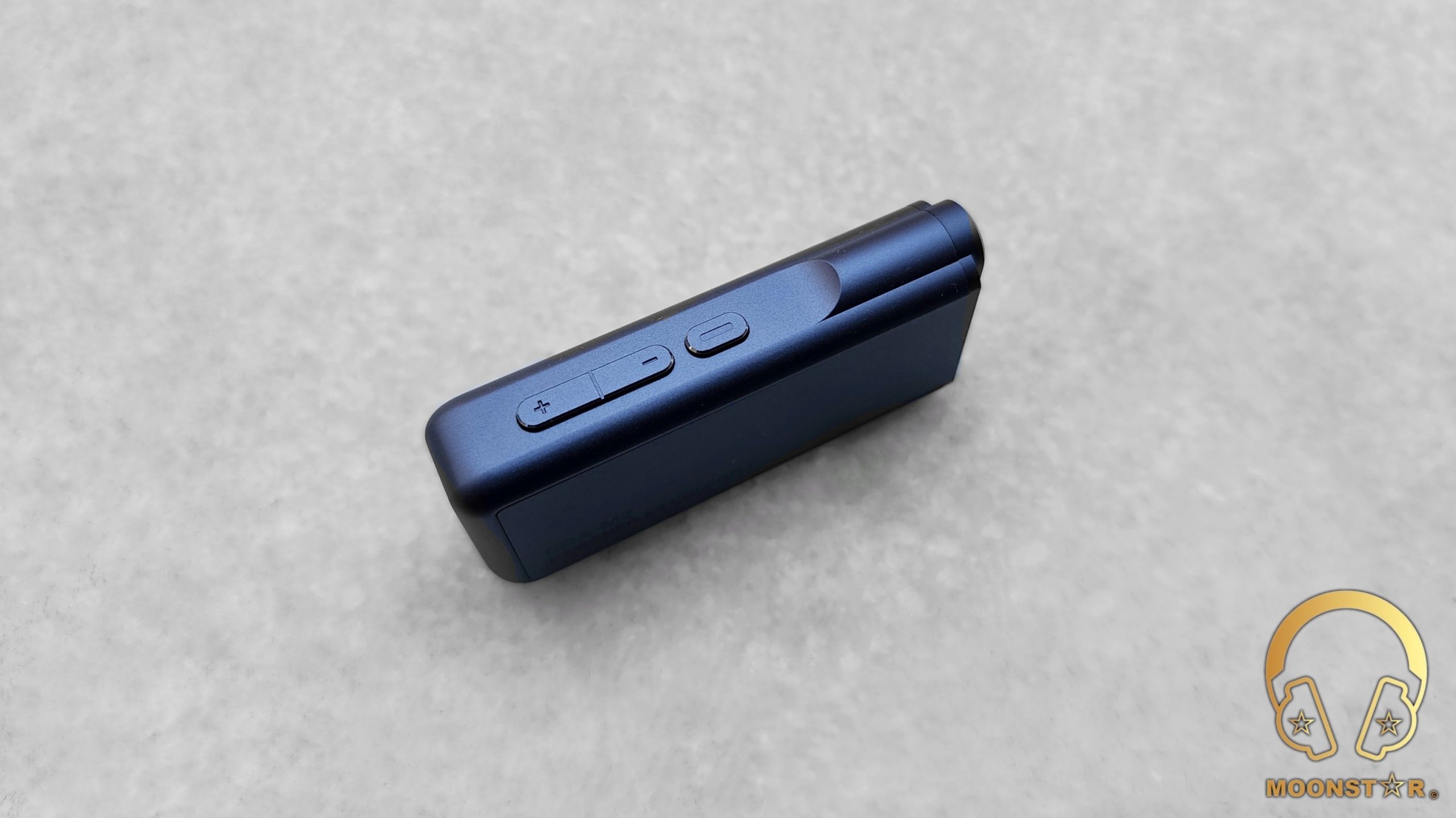
The opposite surface has a pretty stylish design.
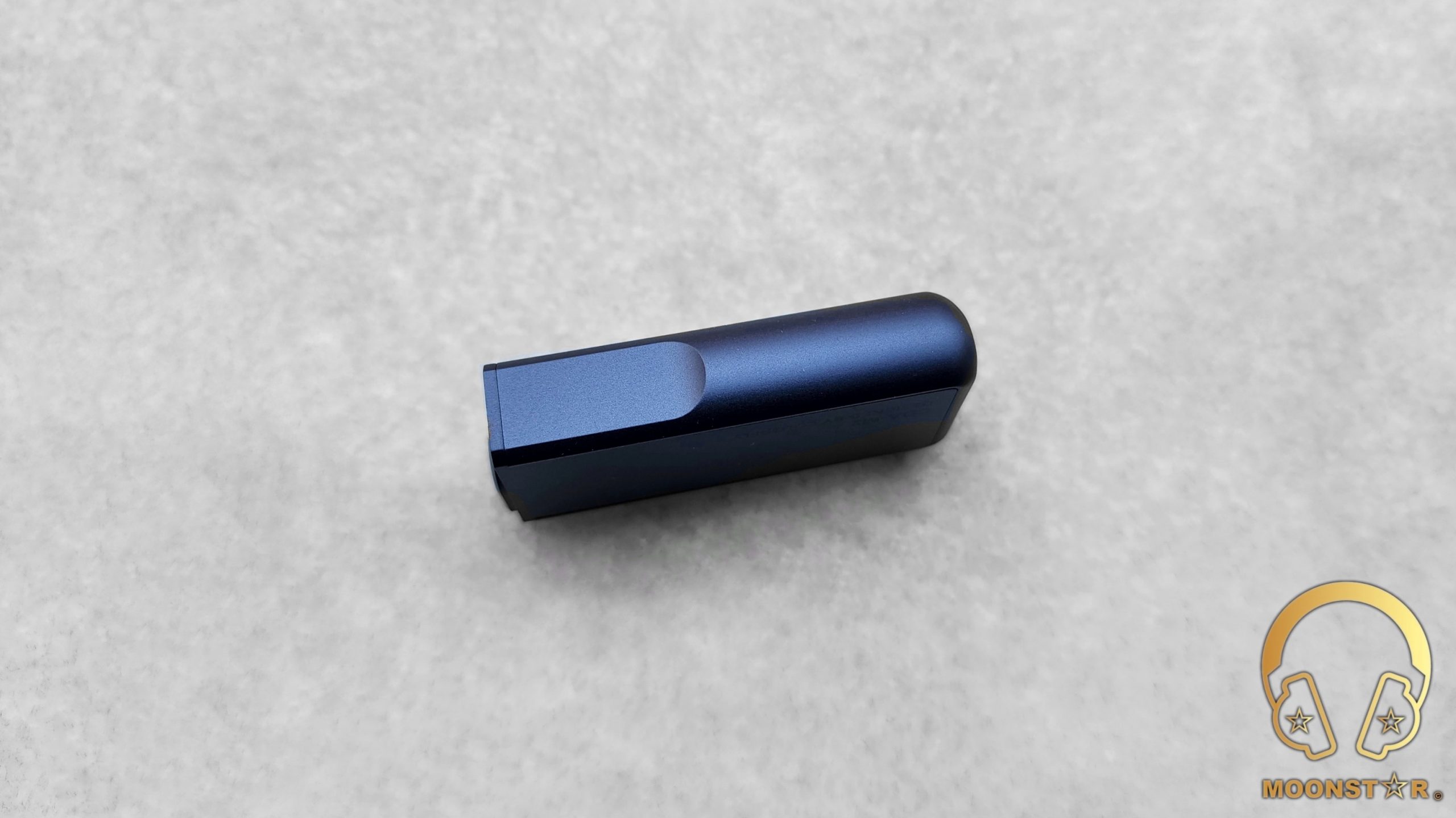
The top of the device are the 3.5mm Single Ended and 4.4mm Balanced analog interfaces, while the 3.5mm output offers also SPDIF Coaxial Output support.
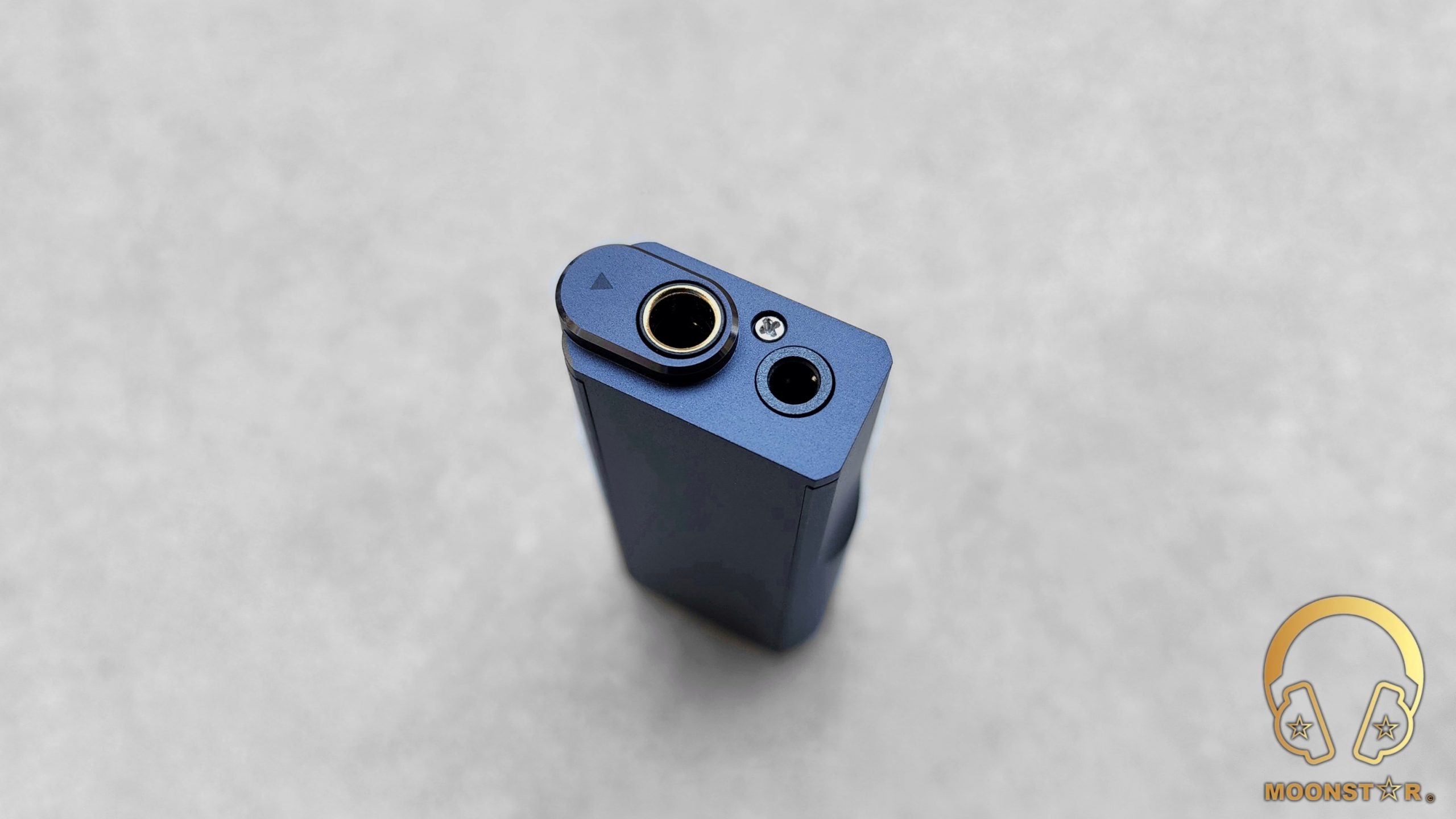
At the bottom of the device is the USB Type-C digital sound & power input port.

Colorfly CDA-M2 comes with a Ribbon-shaped USB Type-C connector cable. This cable is made using high-purity single-crystal copper silver-plated wire cores for optimum performance.
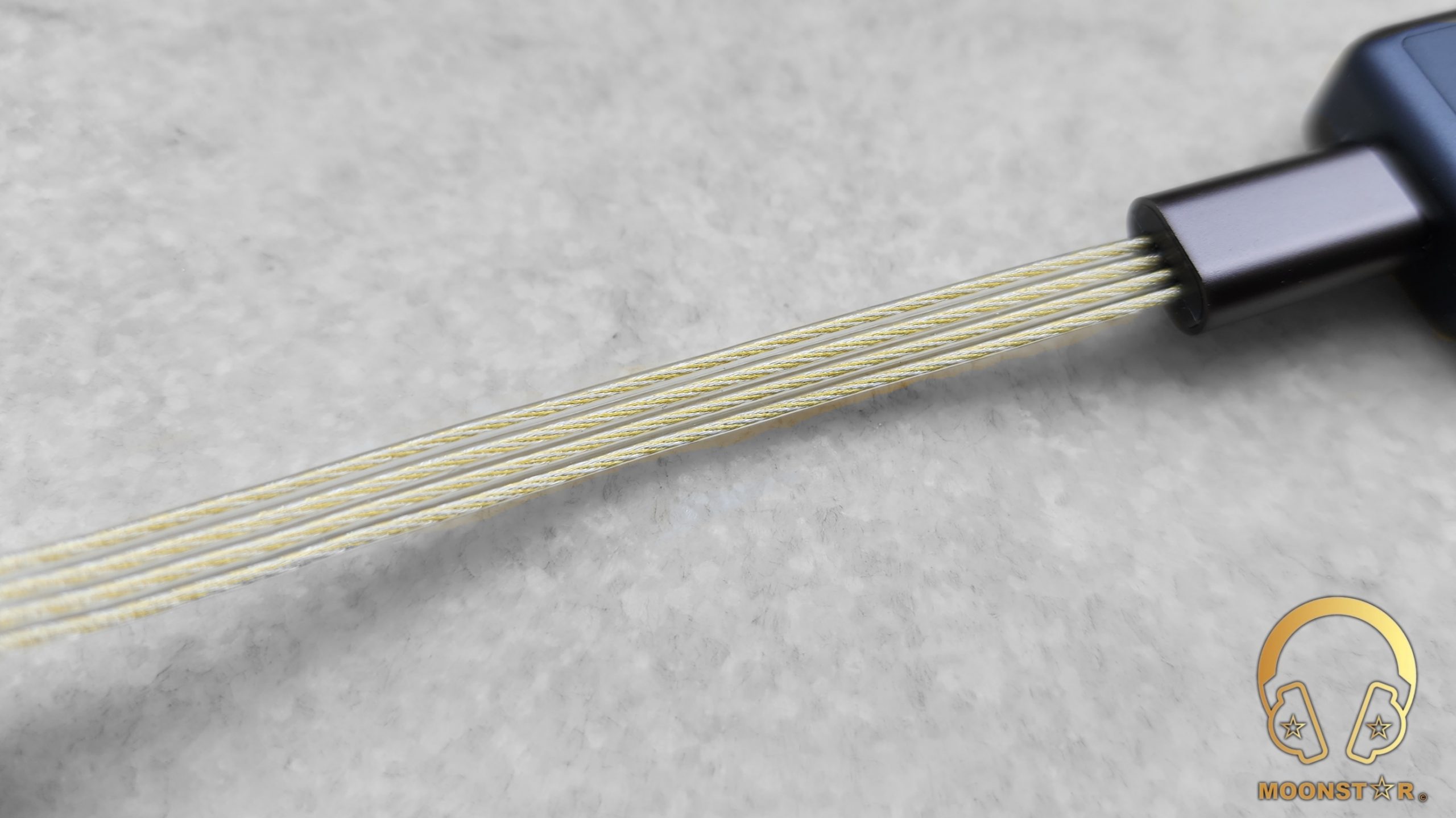
The build quality of the device and the ribbon shaped USB Type-C cable is pretty solid.
Hardware Features:
Colorfly CDA-M2 comes with a premium audio architecture that consists of dual flagship Cirrus Logic DAC chips setup, XR2001 Op-Amps, an FPGA DSP processor, two Jitter Kill femtosecond clocks and a noise-suppression system integrated in to 6-layer gold-plated PCB that features a strategically isolating digital and analog circuits for optimal audio signal processing.
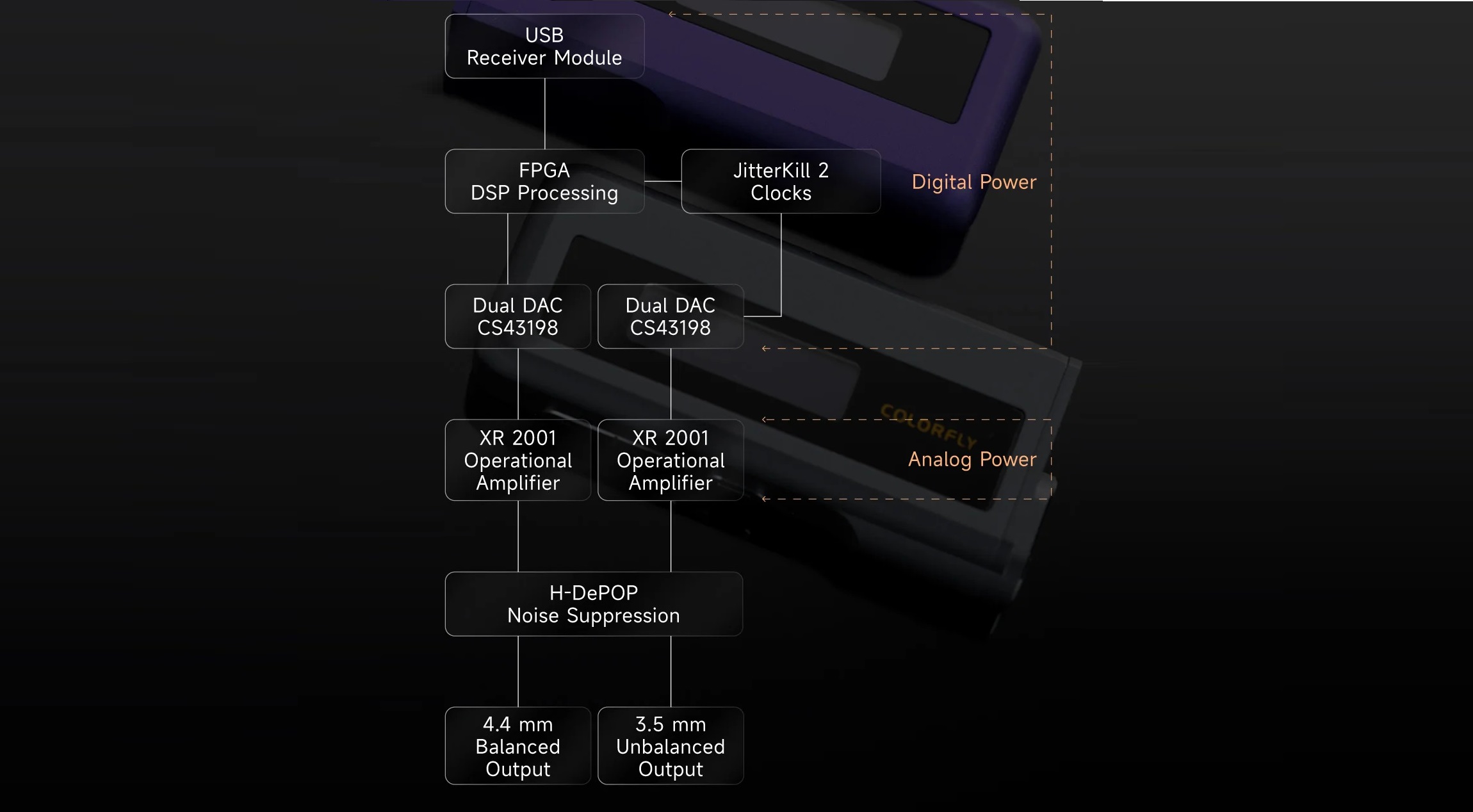
Digital to Analog Converter:
The Colorfly CDA-M2 comes with a premium dual-DAC arrangement that houses two CS43198 Flagship DAC chips from Cirrus Logics that supports up to DSD256 and PCM 32-BIT/768kHz formats. It has a high Dynamic Range (DNR) of 130dB, low actual THD+N value of -114dB (-115dB theoretical) and a Signal to Noise Ratio SNR that is approx. 130db over the 4.4mm Balanced output interface.
The Cirrus Logic Dual CS43198 DAC Chipset support Multiple Digital Filters including Fast LL, Fast PC, Slow LL, Slow PC, and Non OS (Non Oversampling Filter).
Amplification & Background Noise:
Colorfly CDA-M2 features dual headphone output ports with independent XR2001 Operational Amplification chips. Each chip independently powers the 3.5mm and 4.4mm output ports. The CDA-M2 has an output power rating of 250mW @ 32ohm’s per channel through the 4.4mm port and 125mW @ 32 ohm’s per channel through the 3.5mm port. Another highlight is the SPDIF Coaxial output support through the 3.5mm port.

U Series Audio Framework:
Colorfly CDA M2 is designed with a revolutionary Audio framework based on Colorfly’s flagship U Series audio player architecture. The M2’s internal circuitry features a 6-layer gold-plated PCB, strategically isolating digital and analog circuits for optimal audio signal processing. Operating in ASYNC mode, it meticulously restructures data, enabling audio signal transmission to bypass USB clock and SRC interferences.
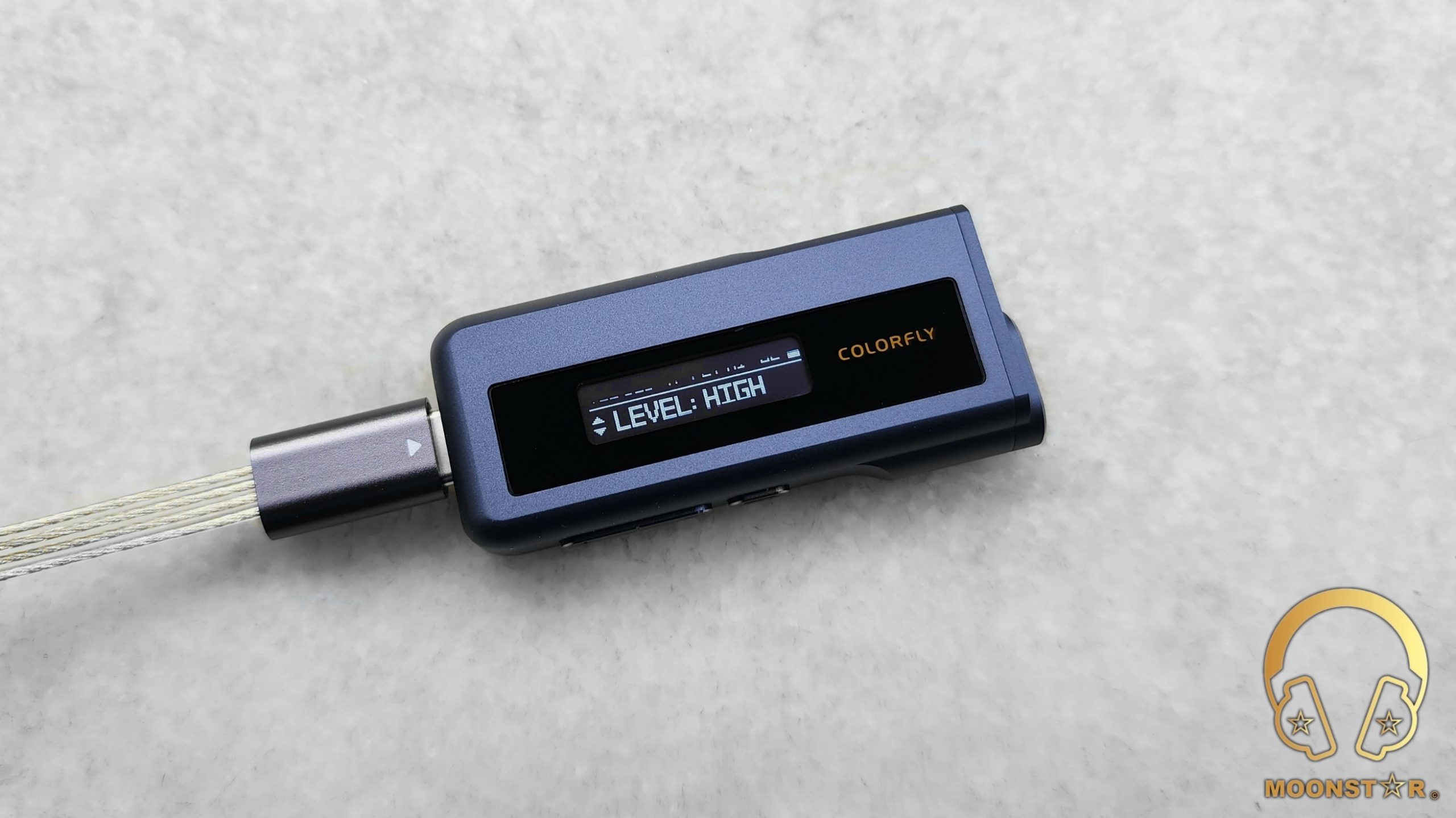
UAC1.0 Mode:
Colorfly CDA M2 is compatible with different gaming consoles including Nintendo Switch and PS5 as it supports UAC1.0 operating mode. It can be used as a high-resolution decoder for gaming consoles.
Technical Specifications:
- Model : CDA-M2
- DAC Chip : Dual CS43198
- Decoding Formats : PCM 32Bit-768kHz / DSD 256 / Native DSD 256 1 DOP
- Headphone Ports : 3.5mm Single-ended and 4.4mm Balanced
- Frequency Response : 20Hz-20kHz
- Signal to Noise Ratio : 130dB
- Line-Out (3.5mm) : 2Vrms @RL=600Ω
- Line-Out (4.4mm) : 4Vrms @RL =600Ω
- Max. Output Power : 4.4mm: 250mW @ 32Ω / 3.5mm: 125mW @ 32Ω
- THD+N : 4.4mm: -114dB
- Dynamic Range : 130dB
- Screen : 128*64 OLED
- USB Interface : Type C
- Dimensions : 58*25*13.5mm
- Weight : ≈27g
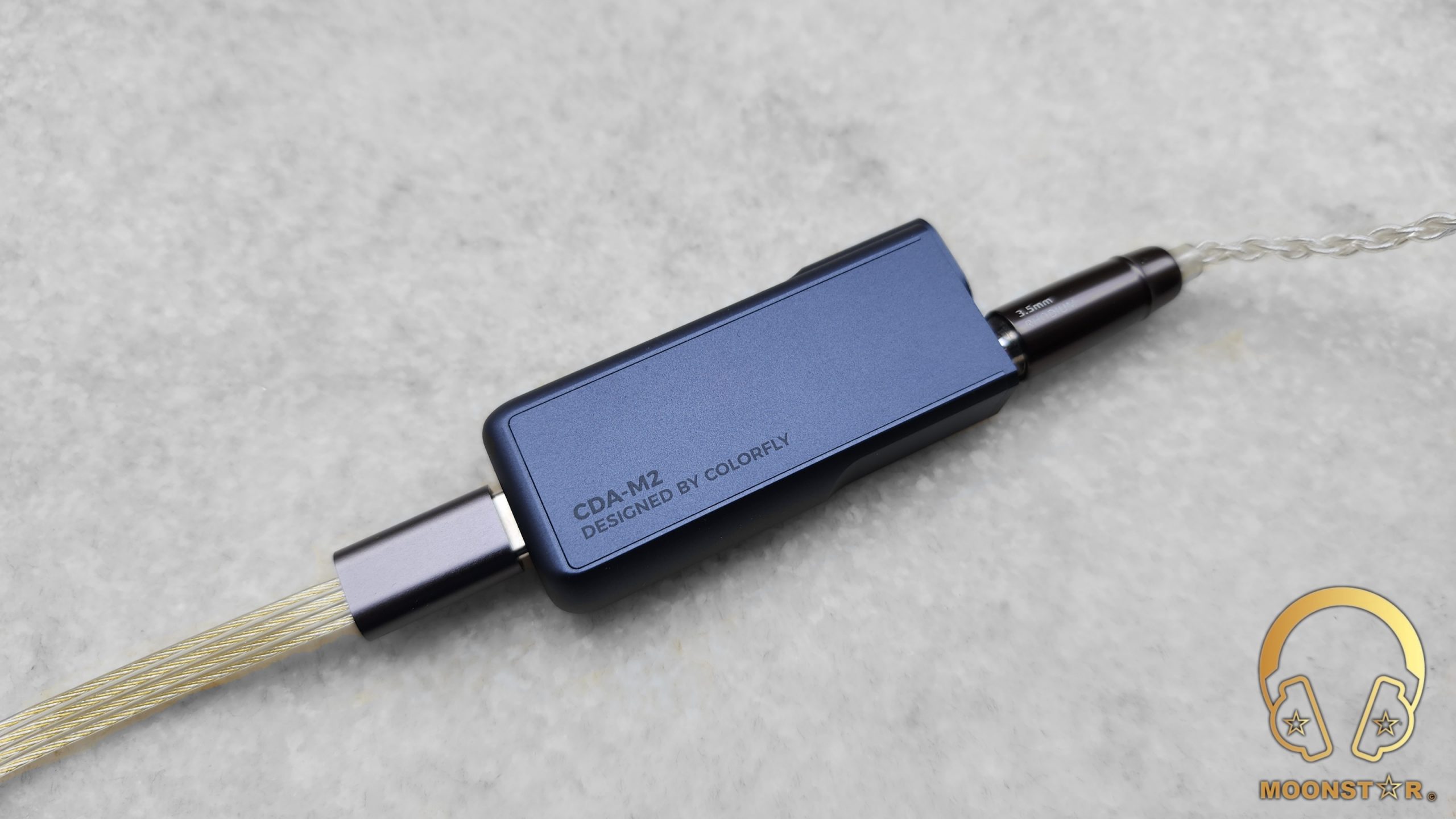
Sources used for this review:
- DAC/Amplifier : Colorfly CDA-M2
- IEM’s : Oriveti OD200, Moondrop Blessing 3, Truthear NOVA
- Headphones : FiiO FT5
- Sources : Samsung Galaxy S22 Ultra, Galaxy Tab S8 Ultra
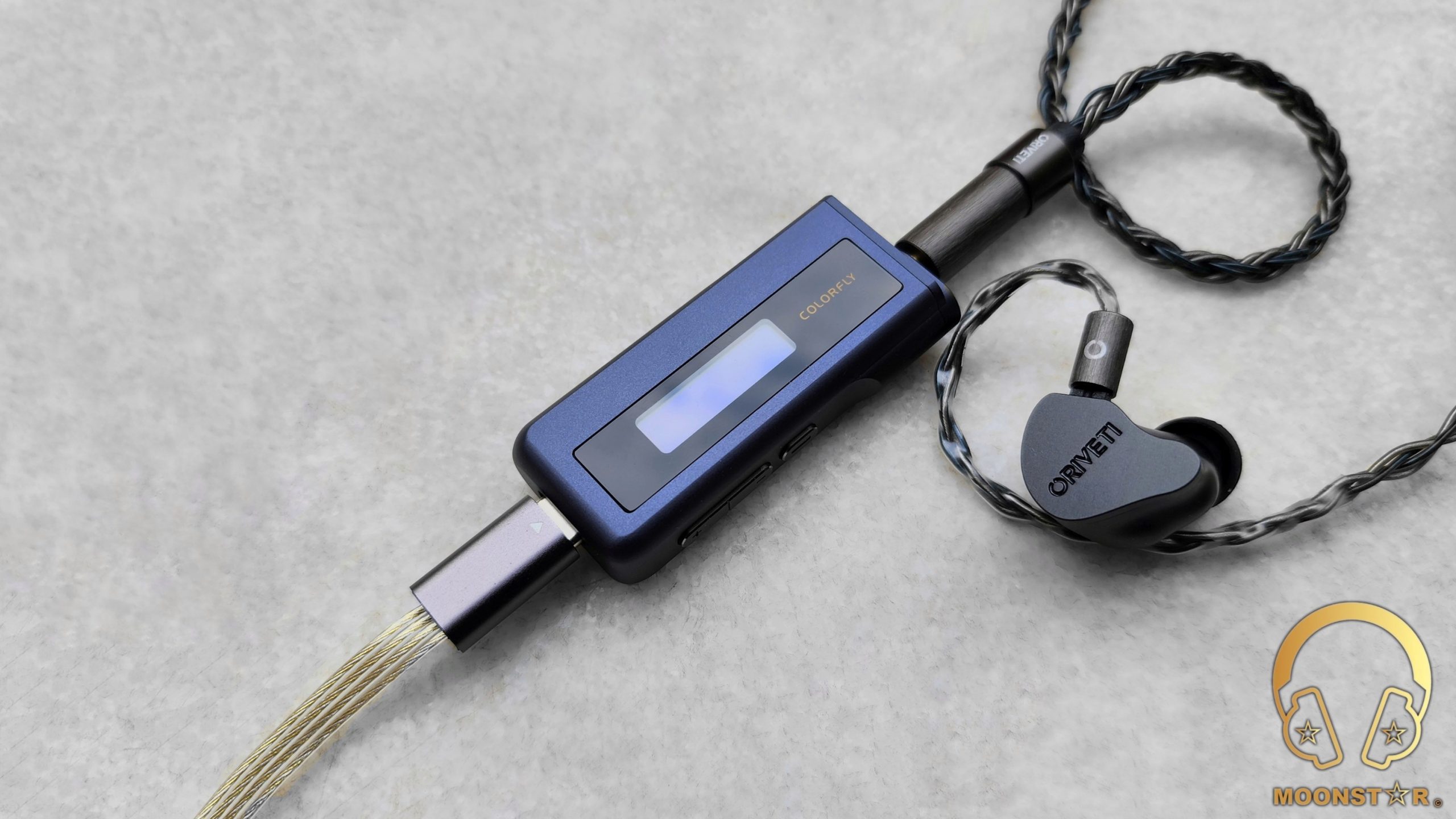
Albums & tracks used for this review:
- Norah Jones – Come Away With Me (Flac 24bit/96kHz)
- Adele – My Little Love (Deezer HiFi)
- Sarah McLachlan – Angel (Flac 24bit/48kHz)
- Sertap Erener – Aşk (Flac 16bit/44.1kHz)
- Edith Piaf – Non Je Ne Regrette Rien (Flac 16bit/44.1kHz)
- Diana Krall – So Wonderful (DSF)
- Aretha Franklin – I Say A Little Payer (Flac 24bit/96kHz)
- Michael Jackson – Billie Jean (Flac 24bit/96kHz)
- George Michael – Don’t Let the Sun Go Down on Me (Flac 24bit/192kHz)
- David Bowie – Heroes (Flac 24bit/192kHz)
- Elton John – Rocket Man ((Flac 24bit/96kHz)
- Barry White – Just The Way You Are (Flac 24bit/48kHz)
- Isaac Hayes – Walk On By (Flac 16bit/44.1kHz)
- Sting – Englishman in New York – (Flac 24bit/48kHz)
- Eric Clapton – Wonderful Tonight (Flac 24bit/96kHz)
- Dave Gahan – Kingdom (Tidal Hi-Fi)
- Radiohead – Live in Berlin “ Album” (Deezer HiFi)
- U2 – Sunday Bloody Sunday (Flac 16bit/44.1kHz)
- Muse – Hysteria (Flac 24bit/96kHz)
- Red Hot Chili Peppers – Nobody Weird Like Me (Flac 24bit/48kHz)
- Michael Jackson – Billie Jean (Flac 24bit/96kHz)
- Bear McCreary’s – Valkyries (Deezer HiFi)
- Bro Safari, UFO! – Drama (Deezer HiFi)
- Armin Van Buuren – Vini Vici (Flac 16bit/44.1kHz)
- Daft Punk – Doin’ it Right (Flac 24bit/96kHz)
- Lorde – Royals (Flac 24bit/48kHz)
- Massive Attack – Angel (Flac 24bit/48kHz)
- Toutant – Rebirth (Deezer HiFi)
- Gogo Penguin – Raven (Flac 24bit/192kHz)
- Gogo Penguin – Murmuration (Flac 24bit/192kHz)
- Portishead – It Could Be Sweet (Spotify)
- Max Richter – On the Nature of Daylight (Flac 24bit/96kHz)
- Charly Antolini – Duwadjuwandadu (Flac 24bit/192kHz)
- Tchaikovsky – Symphony No. 5 (Flac 16bit/44.1kHz)
- Ferit Odman – Look, Stop & Listen (Flac 24bit/192kHz)
- Chopin – Nocturn No. 20 In C-Sharp Minor (Flac 16bit/44.1kHz)
- Clair de Lune – Claude Debussy (Spotify)
- Fazıl Say – Nazım Oratoryosu (Live) (Flac 16bit/44.1kHz)
- Vivaldi – Le QuarttroStagioni “The Four Season” (Deezer HiFi)
- Otto Liebert& Luna Negra – The River (Flac 24bit/192kHz)
- Lunatic Soul – The Passage (Flac 16bit/44.1kHz)
- Crown Lands – White Buffalo (Spotify)
- Deftones – My Own Summer (Shove it) (Flac 16bit/44.1kHz)
- Metallica – Dyers Eve (Flac 24bit/96kHz)
- Metallica – Sad but True (Flac 24bit/96kHz)
- Opeth – Windowpane (Flac 16bit/44.1kHz)
- Megadeth – A Tout Le Monde (Flac 24bit/96kHz)
- Megadeth – Sweating Bullets (Tidal Hi-Fi)
- Rush’s – Tom Sawyer (Flac 16bit/44.1kHz)
- Slayer – Angel of Death (Spotify)
- Liquid Tension Experiment 2 – Acid Rain (Spotify)
- Yosi Horikawa – Bubbles (Spotify)
The Sound:
The Colorfly CDA-M2 delivers a musical, nuanced, and airy sound. It boasts powerful textured bass, clear vocals, and crisp treble, creating a spacious and well-defined soundscape. While the lower midrange is slightly recessed, the overall sound remains balanced and detailed, excelling in its ability to separate and present instruments with finesse.
This review has been written after a burn-in period of 55 – 60 Hours. I have used the stock USB Type-C to USB Type-C cable paired with the Samsung Galaxy S22 Ultra and Tab S8 Ultra. My sound impressions below are mainly based on my pairings with the Oriveti OD200, Truthear NOVA, Moondrop Blessing 3. Digital Filter set to Non OS.
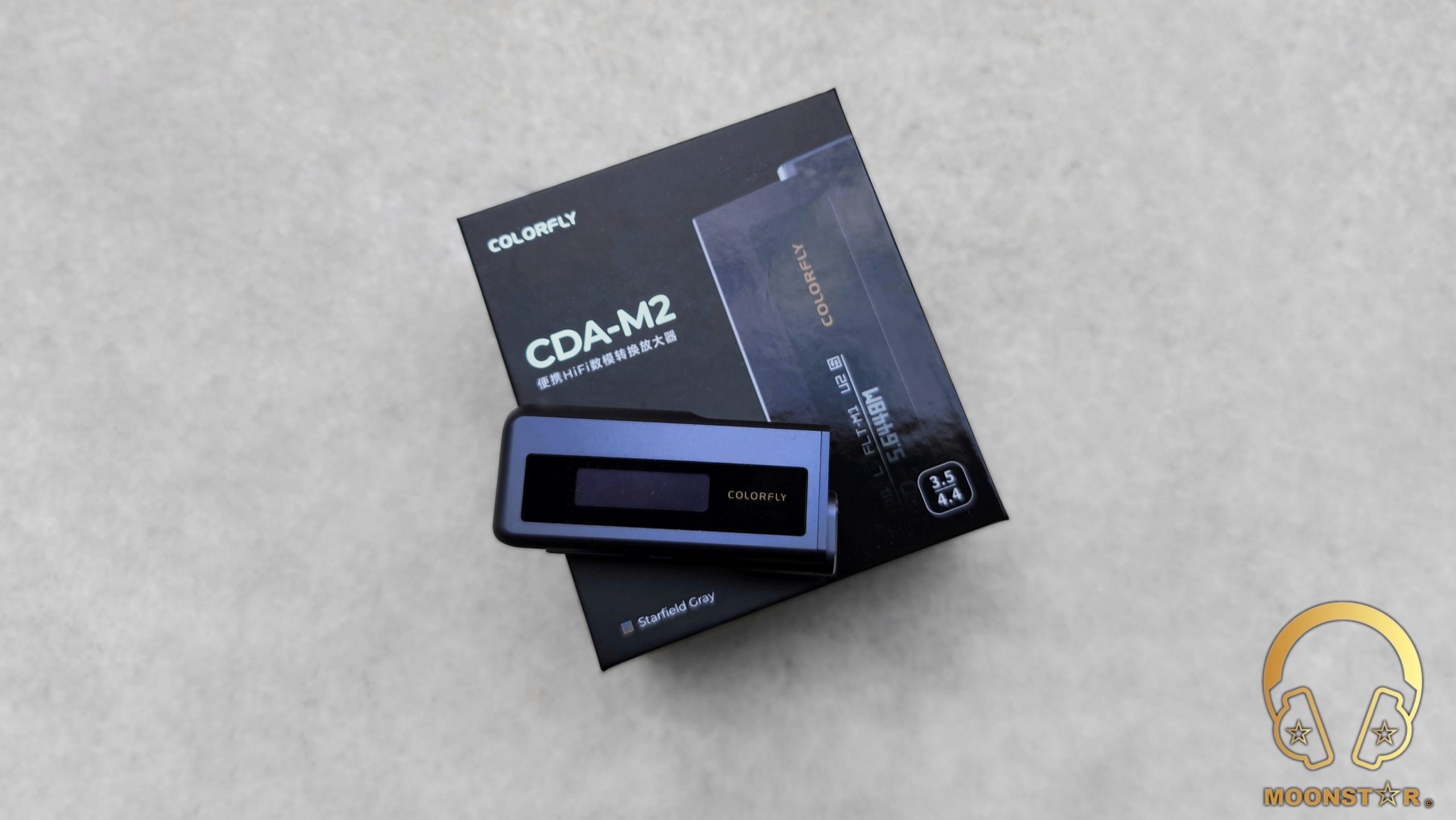
Bass / Midrange / Treble / Soundstage & Imaging:
The Colorfly CDA-M2’s bass performance strikes a balance between power and precision. It is in general tight, punchy, and well-controlled, which avoids the pitfalls of muddy bloat or excessive rumble. Sub-bass extension is impressive, adding depth and impact, as heard in the deep synth throbs of Lorde’s “Royals” or the pulsating bassline of Photek’s “The Hidden Camera” when paired with IEM’s like the Truthear NOVA or Oriveti OD200. The mid-bass remains balanced and dynamic, adding warmth and body without overshadowing other frequencies. This creates a foundation that’s both impactful and nuanced, perfect for bass-heavy genres like EDM or hip-hop.

Clarity, detail, and articulation define the Colorfly CDA-M2’s midrange. Its natural and smooth tonality avoids harshness or nasality, even when pushed to higher volumes. While the lower midrange area is a slightly bit recessed, contributing to a lean and clean presentation, the upper midrange region come forward just enough to bring out vocals and instruments with clarity and emotional nuance. This characteristic shines in complex, layered tracks like Megadeth’s “A Tout Le Monde” or “Hysteria” by Muse that was audible with IEM’s like the Moondrop Blessing 3 and Oriveti OD200. The CDA-M2’s ability to separate and present each instrument within the dense orchestral arrangement is pretty decent.

The treble range of the Colorfly CDA-M2 sounds crisp and sparkly, extending into the higher frequencies without becoming harsh or sibilant. The lower treble is energetic and lively, adding a touch of brightness and airiness to the sound, evident in the shimmering cymbals of a jazz track or the energetic attack of a violin solo. The upper treble remains refined and airy, creating a sense of spaciousness and openness, when paired with the Blessing 3 and OD200. This allows the CDA-M2 to reproduce the subtle nuances and details of high frequencies with finesse, as heard in the delicate shimmer of flutes or the breathy whispers of hi-hats.

The Colorfly CDA-M2 presents a spacious and well-defined soundstage, with good separation and layering of instruments with respect of its price tag. Imaging is generally accurate, allowing for good localization of sound sources within the mix. In complex orchestral recordings or live concert tracks, instruments occupy distinct positions, though the overall width and depth may not quite reach the level of high-end desktop setups. Overall, the soundstage provides a satisfying sense of space and separation, particularly for the price point.
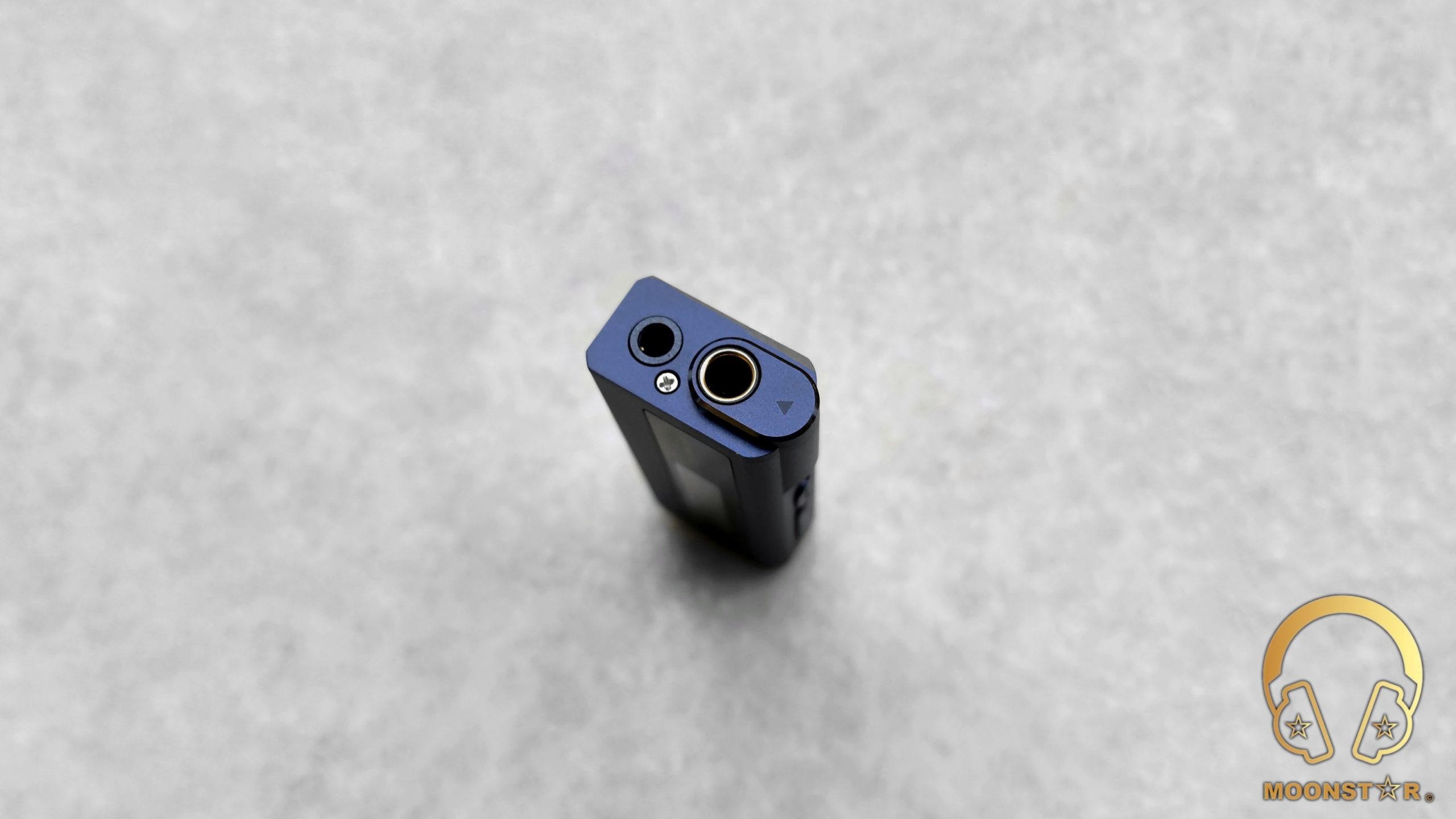
Conclusion:
The Colorfly CDA-M2 delivers a powerful and nuanced audio experience in a compact and portable package. Its premium DAC architecture translates into impressively detailed and well-controlled bass, clear and articulated midrange, and sparkling yet refined treble. While the soundstage may not rival high-end desktop setups, it still offers good instrument separation and a convincing sense of space. Overall, the CDA-M2 is a compelling option for audiophiles seeking a portable DAC/AMP that punches above its weight.
Pros & Cons:
- + Clean, Detailed and Musical Sonic Profile
- + Sophisticated Audio Architecture
- + Useful OLED Screen
- + Hardware Volume Control
- + Lightweight (27g) yet Robust Design
- + Clean/Noise-Free Sound Output
- – Slightly recessed lower midrange
- – Minimalistic Unboxing Experience
- – No Lightning cable for Apple iOS users

